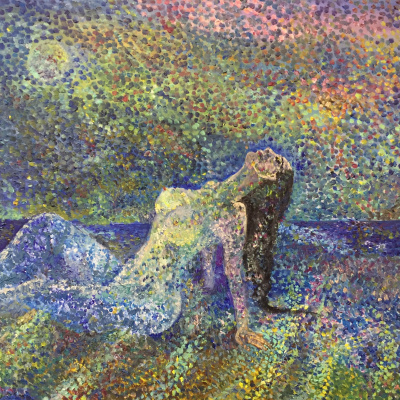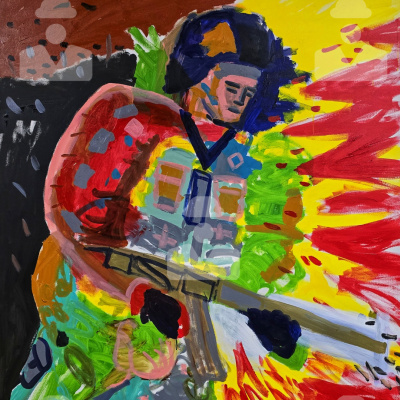
Strict vertical line of a washstand
Byzantium, a heiress of the Roman Empire , passed this advantage of ancient civilization to the Christianity as a polysemous symbol. First of all, a special washstand was used for priests to wash their hands before service, which is called lavabo. Very often such device for washing hands had a shape of a fountain.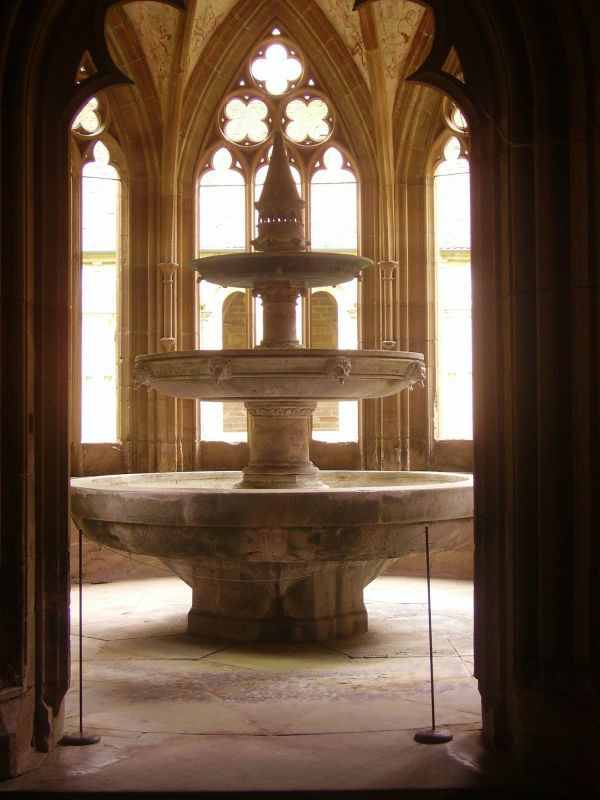
Since the Church needed strict structural hierarchy, the motif of a multilayer fountain symbolizing closely interrelated Church and society appeared in the icon painting. The upper layer of the fountain symbolized the idea of God, who bestowed the life-giving holy water on the Christians.

The same idea about the world order was embodied in the Fountain of Grace and the Triumph of Ecclesia by one of van Eyck’s followers.

A fountain usually had a hexagonal structure covered with a cupola. The columns in front embodied four Evangelists, who declare good news since their books talk about the good news of Jesus, and four headwaters running from Eden symbolizing the Grace of God bestowed upon everybody and everything. (Illustrations from the Bible of the Carolingian dynasty dedicated to baptism of son of Charles the Great in 781, the Gospels from the abbey of St. Medard, Soissons).

Indeed, blood is thicker than water.
The idea of Christ’s sacrifice had been altered in the Western painting in a peculiar way, though, it reached its peak of subtlety. You can see this development in the central panel of the Ghent Altarpiece (the Adoration of the Mystic Lamb), which was finished in 1432 by Jan van Eyck.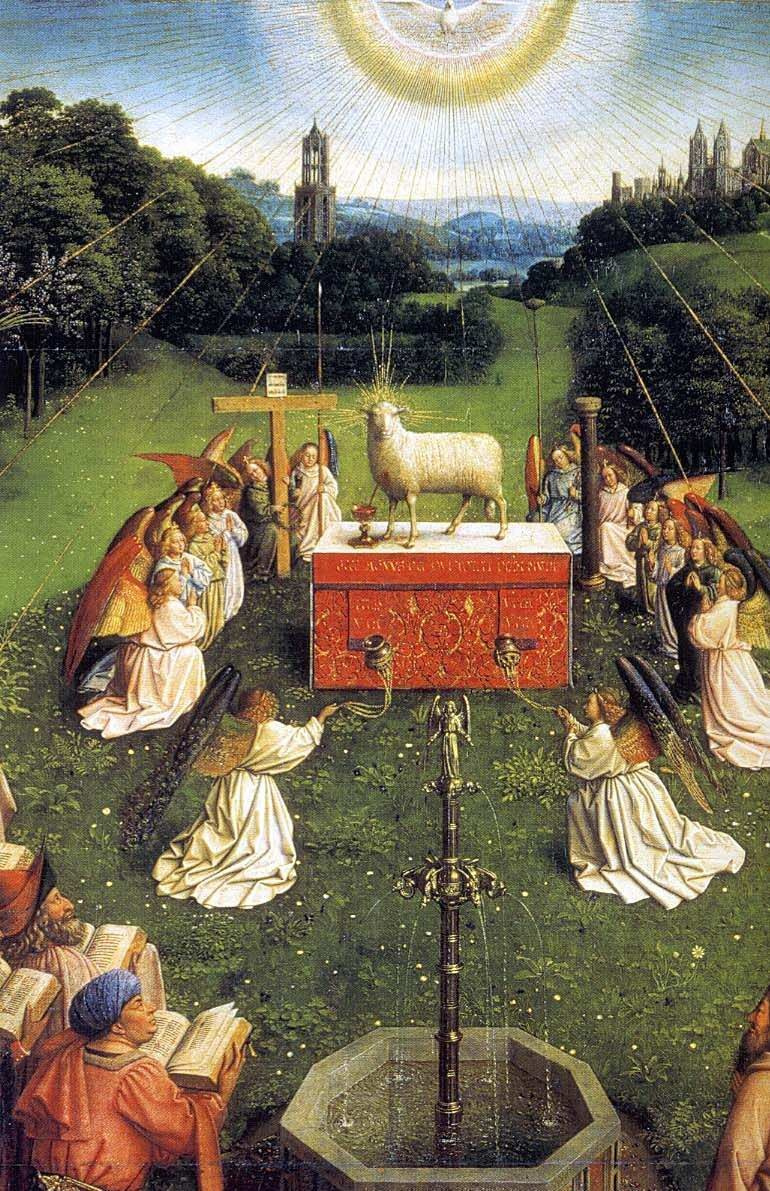
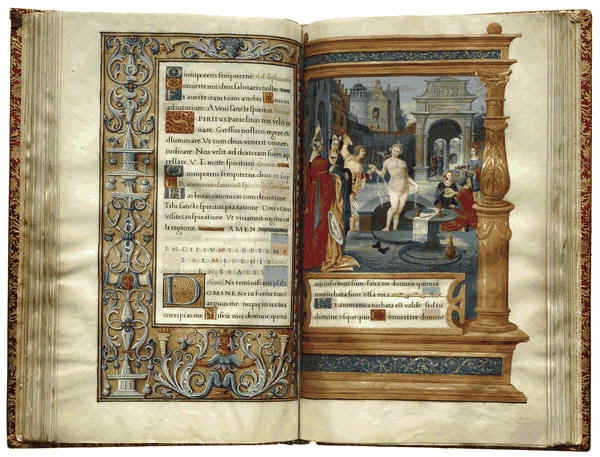
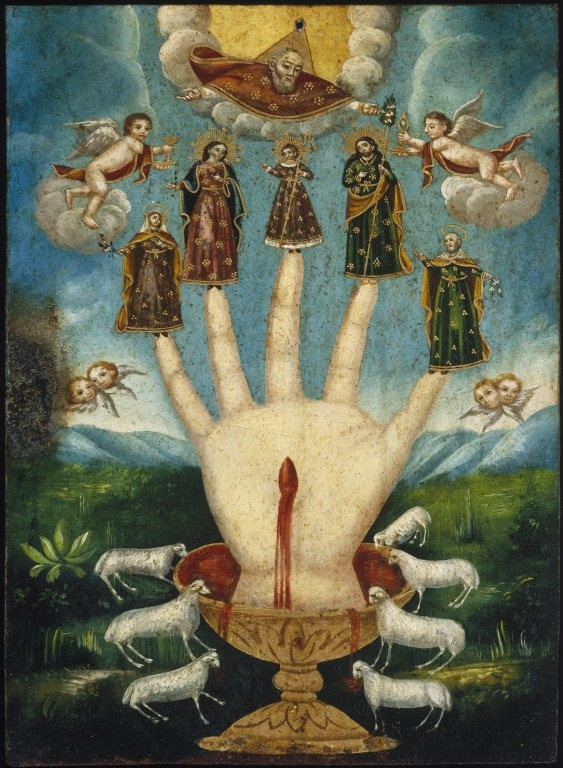
Further, this motif was successfully continued in the Spanish culture with its bloody religious traditions like in this Mexican icon of the XVII century housed at the Brooklyn Museum.
The heart of the Garden of Eden
You can hardly find the better place for rest during a hot day than near a spring with cold water in the shade of a tree, just like a corner of paradise. That was the reason why a fountain became an actual detail as a symbol of the Garden of Eden and romantic love.A yard of a monastery usually of a square shape was divided crosswise in four square parts by narrow paths, which had its own symbolic meaning. In the center of the path crossing they used to build a fountain or a well, some small source providing water in general and embodying purity of the faith and inexhaustible God’s grace. We cannot but mention in this connection Bathsheba, whose story is mentioned in the Holy Bible.


Karl Bryullov. The Bathsheba
Life-giving spring
The popular subject matter of the orthodox icons is Mother of God with the Child in the fountain with the water pouring out (the Life Spring, Zoodochos Pigi monastery of Virgin Mary, Corfu). The tradition originated from the miracle-working spring near Constantinople, where the miraculous grace of the Mother of God had revealed. At the same time, the Life Giving Spring is attributed to the Mother of God.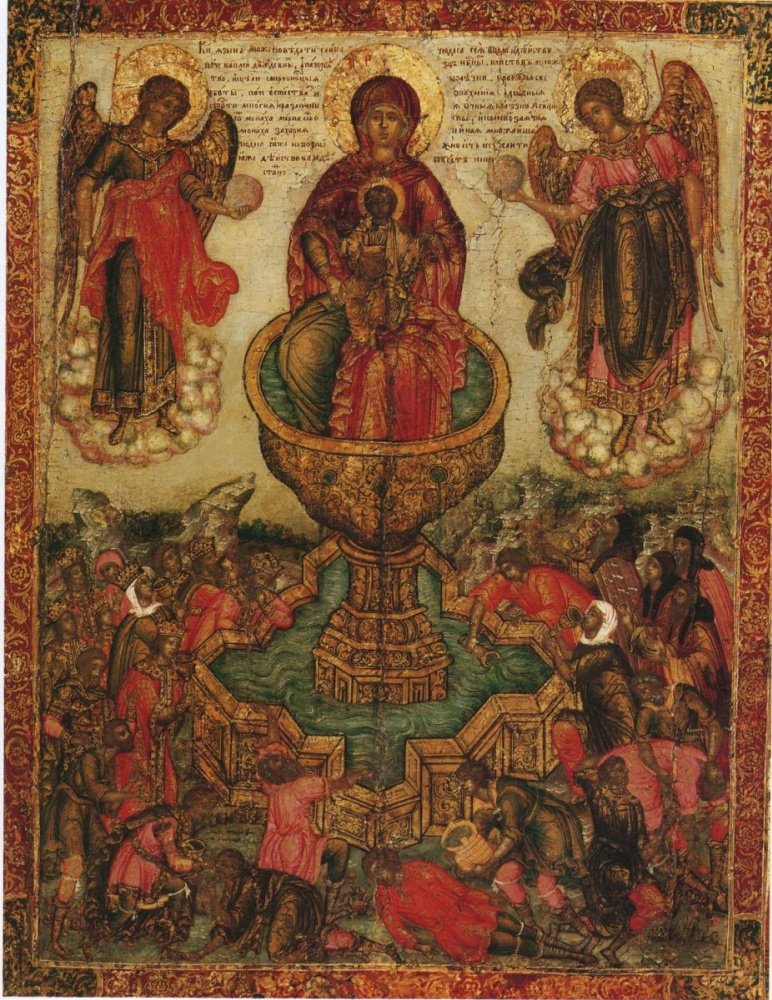
Seeking eternal youth
The Italian fountains certainly deserve a special topic. These architect masterpieces resonated with the austere views of the advocates of Christianity appealing to exercise restraint and chasteness. The style of fountains of the Renaissance and Baroque is full of pagan delight and its address to antiquity is the evidence of different ideas and values.The idea of the fountain (or spring) of eternal youth (or the fountain of life giving water) gained its popularity in the late Middle Ages and had nothing to do with the religion. (Erotic had yielded its importance in the inner world of a person taking into account rather tough attitude of the medieval society to the body hygiene). Everybody had been seeking the miracle including Herodotus and Alexander III of Macedon.
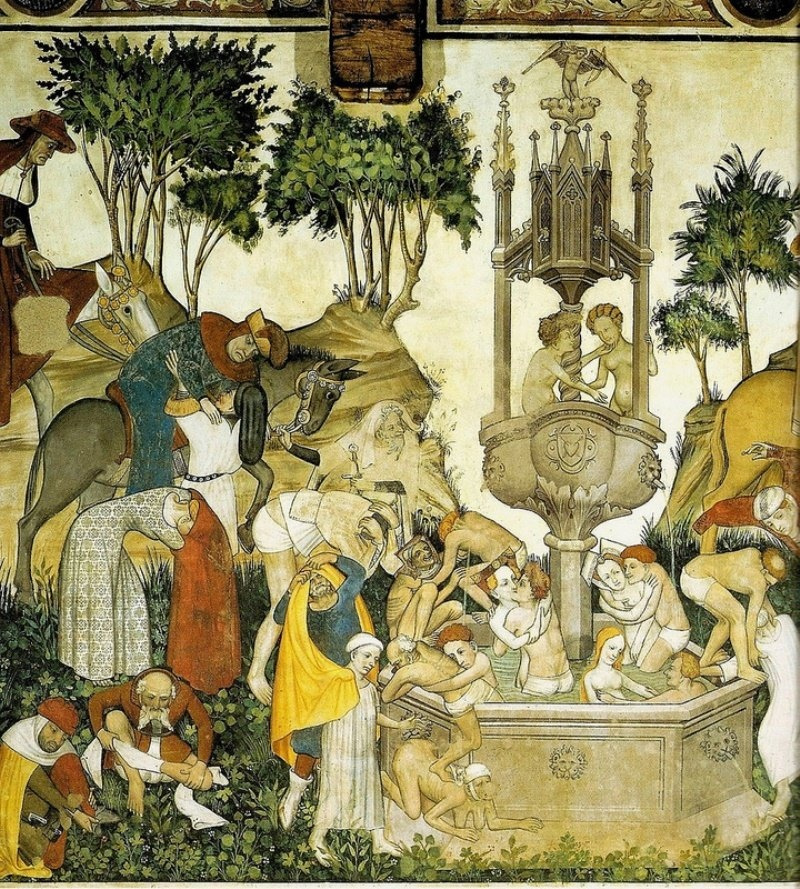
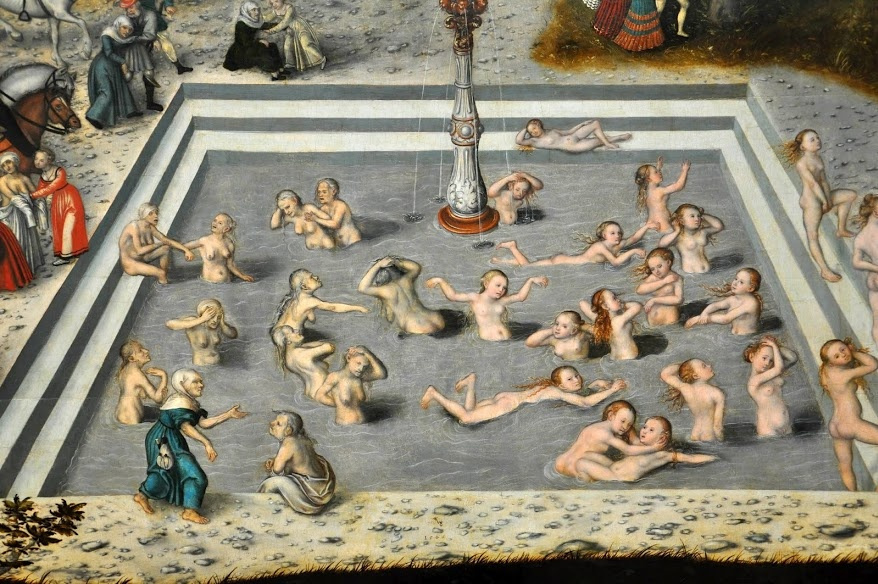

Putto making water life giving
The Sacred and Profane Love by Titian (1514) attracting attention of a viewer first of all by the depicted beautiful women is full of puzzles and mysteries. The shape of the fountain likely resembles a tomb-chest, though the cupid makes the water life giving. The images of a fountain and a tree have a lot of senses. Somebody treats them like a river with the life giving water and the Tree of Life producing leaves for healing of people (according to the book of Genesis, Apocalypse of John). Somebody associates the Tree of Life and the life giving water with the sacraments of the Church, baptism and the Eucharist. In this case the putto’s hands stirring the water in the fountain are sometimes related to the baptization, particularly to the blessing of water in the baptistery.
O tempora! O mores!
Dada artists were getting sick of refined symbolists, realists and other admirers of beauty depicting the languish world with cow-eyed girls walking along opulent gardens and parks dreamily looking at their reflections in water. Maybe that was the reason that encouraged Marcel Duchamp to offer his own source of delight, life and eternal youth.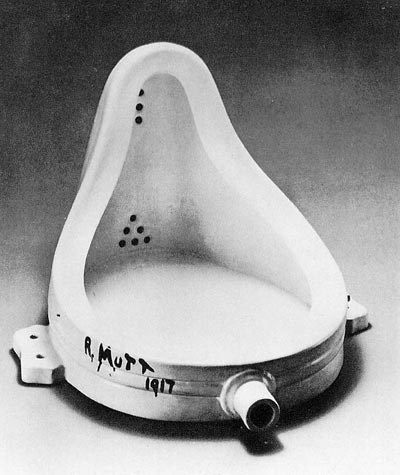
For the exhibition of the Society of Independent Artists, in 1917 in New York the artist submitted the urinal entitled the Fountain. The ironic title of the object formalized its stand as a piece of art.











